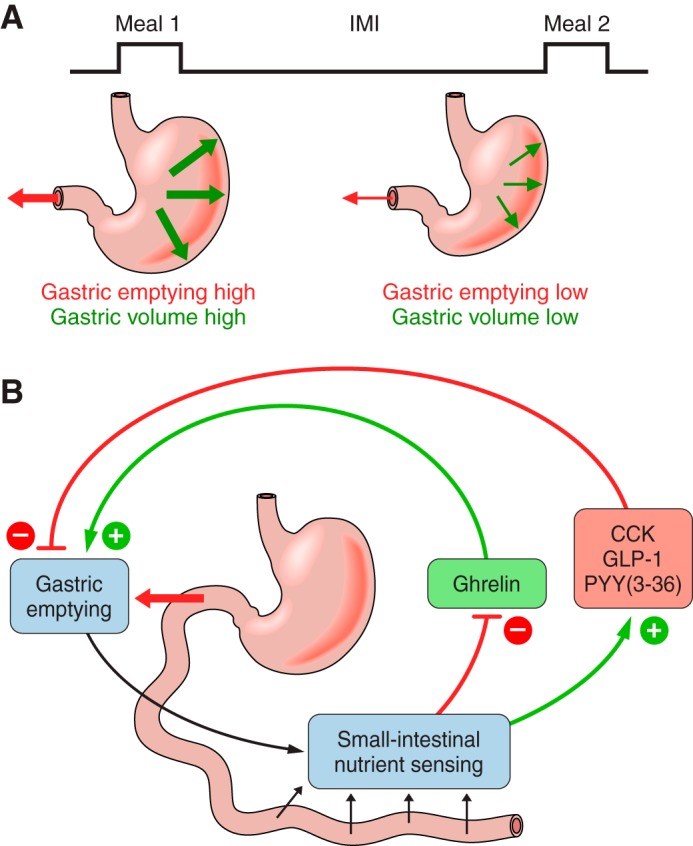FIGURE 5.

Gastric volume, gastric emptying, and ghrelin, CCK, GLP-1, and PYY(3–36) secretion in relation to meals. A: eating a meal increases gastric volume-related mechanoreception (bold green arrows), which increases satiation signaling via neural afferents, and increases gastric emptying and the delivery of ingested nutrients into the small intestine (bold red arrow), which increases satiation and satiety signaling and decreases hunger signaling. As the intermeal interval (IMI) progresses, volume sensing and gastric emptying progressively decrease (thin red and green arrows). B: gastric emptying determines the rate of appearance of nutrients into the small intestine and, together with the rate of digestion and small-intestinal motility, controls small intestinal-nutrient sensing. For most meals, small intestinal-nutrient sensing inhibits ghrelin secretion (red arrow, −) and stimulates CCK, GLP-1, and PYY secretion (green arrows, +). In turn, ghrelin stimulates (green arrow, +) and CCK, GLP-1, and PYY(3–36) inhibit (red arrows, −) gastric emptying. Note that each feedback loop is negative, as indicated by the change in sign (e.g., red to green) between (small intestinal-nutrient sensing)–(hormone secretion) and (hormone secretion)–(gastric emptying).
